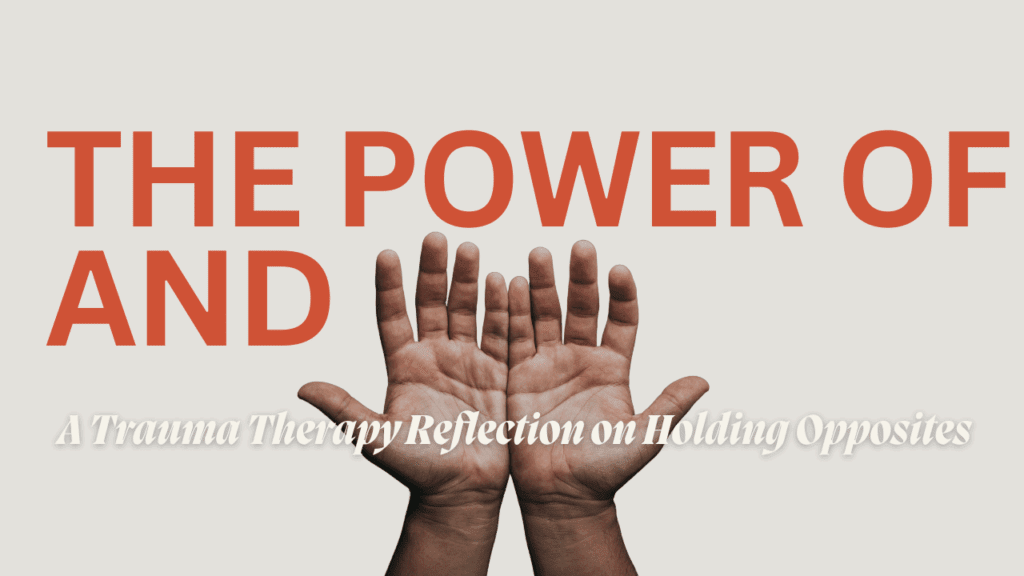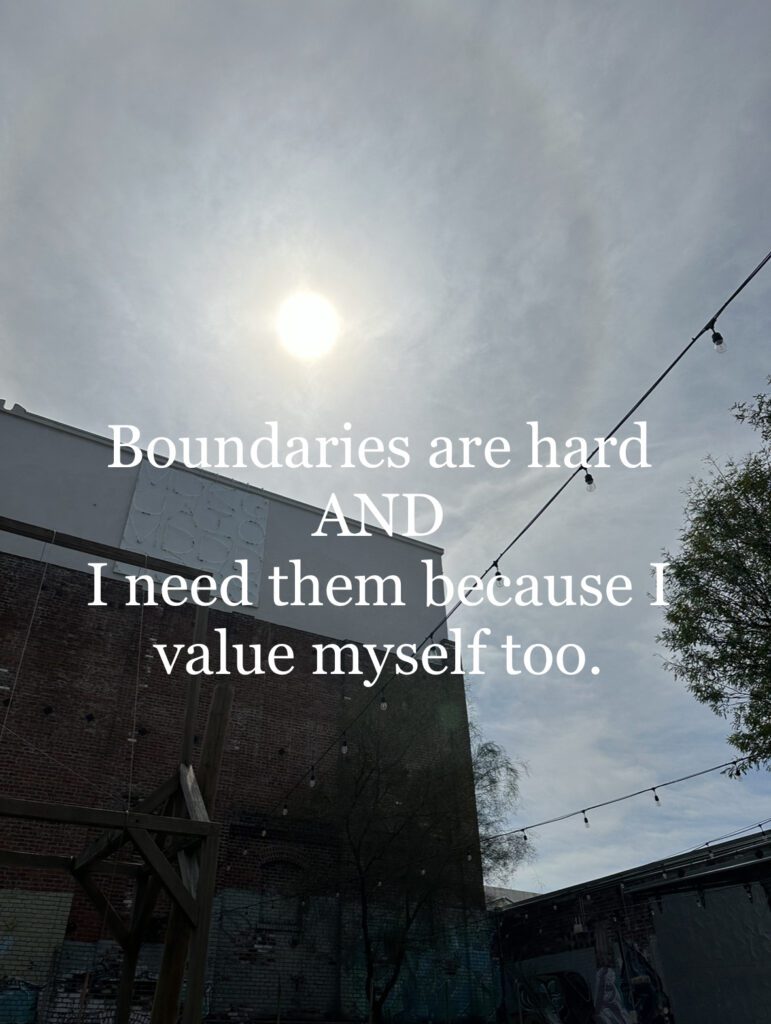
In trauma therapy, we learn that healing rarely unfolds in neat, linear lines. More often, it reveals itself in paradoxes. We feel two truths pulling in different directions—yet both are valid. Both are real.
Dialectical Behavior Therapy (DBT), a powerful modality often used in trauma work, is grounded in this very idea. A dialectic is the art of holding two seemingly opposing truths at once.
Acceptance and change.
Pain and growth.
Compassion and accountability.
One of DBT’s core teachings is this:
We can accept where we are AND still move toward something better.
It’s simple. And it’s radical.
Because life, especially after trauma, is rarely black or white. All-or-nothing thinking can feel protective, especially when we’re hurting. It offers a sense of control. But it also keeps us stuck.
Dialectical thinking, on the other hand, invites us to soften. To open to nuance. To give ourselves the grace of both/and.
Practicing the AND
When I feel the fog of anxiety or the weight of sadness creep in, I return to this practice to allow room for contradictions, and to let both truths breathe.
- I feel alone in this moment AND I know I’m loved.
- I feel safe in this relationship AND I still struggle to open up.
- I love to give AND sometimes I feel resentful of giving so much.
- Boundaries are hard AND I need them to feel safe.
- I have forgiven AND I choose distance for my own peace.
Clients in trauma therapy often discover their own versions of this dual truth:
- I accept that my parents did the best they could AND I still carry wounds.
- I’ve come far in my healing AND it sometimes feels lonely.
- I want to care deeply AND I feel burned out.
- It wasn’t my fault AND I want to do better.
- I love this person AND I need clear boundaries to stay connected to myself.
- I feel grateful for what I have AND I feel guilty.
These statements don’t cancel each other out. They hold the full truth, your truth. They offer self-validation without bypassing the complexity of being human.
A Gentle Practice for You
If you’d like to explore this in your own healing, here’s a small, creative exercise I often share in my support groups:
1. Choose a photo that brings you a sense of grounding, strength, or beauty. It might be of nature, a meaningful moment, or an abstract image that feels right for you.
2. Add a line of text to the image—your own dialectical affirmation using the word ‘AND’. (You can use Instagram stories or any simple photo editor.)
3. Save it as your wallpaper or keep it somewhere visible. Let it remind you that two things can be true. And you don’t have to choose.
Here’s an example:

There’s power in the paradox. There’s healing in the AND.
If you’re curious about trauma therapy, or want support navigating these emotional truths with the help of DBT and other modalities, you’re not alone. Visit my services page to learn more or reach out.